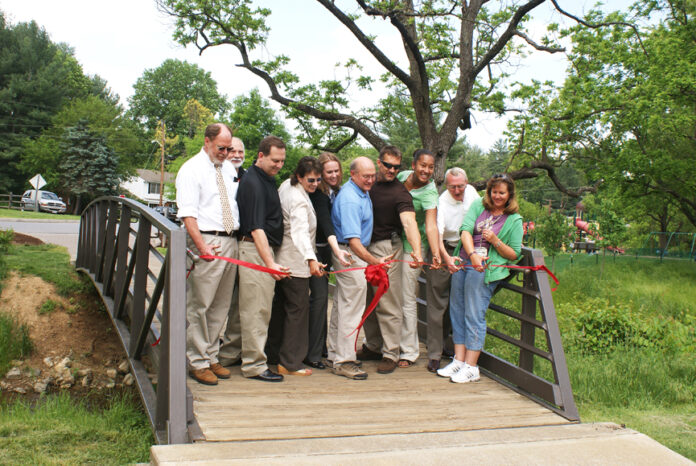
Restoration is complete at Mudlick Creek at Garst Mill Park. A ribbon cutting last Thursday capped off the $500,000 price tag, with nearly $300,000 coming in grants from the Virginia Department of Conservation and Recreation.
The restoration includes a half-mile stretch of paved greenway, the rehabilitation of steep creek banks, the addition of grasses and plants to reduce erosion and restoration of the in-stream habitat for fish.
Dangerously steep banks were sloped downward to minimize the risk to park patrons, with a rock retaining wall built along one stretch of Mudlick Creek. Improved drainage should help relieve previous flooding experienced in the park and by adjoining property owners.
Parks, Recreation & Tourism director Pete Haislip said before the ribbon cutting that issues at Garst Mill Park were among the first he learned of when applying for the job.
“Sixteen years later, we fixed it,” Haislip said, drawing chuckles from those gathered at the park pavilion.
Windsor Hills supervisor Joe McNamara, up for reelection, said that “acre for acre” he believed Garst Mill had “more usage than any park in Roanoke County,” including ball fields used for baseball and soccer.
Fixing the steep creek banks at Garst Mill, like the work done further downstream at Hidden Valley High School, is all part of the county’s ongoing “education process,” said McNamara, in dealing with storm water management and erosion.
County engineer George Simpson, who oversaw much of the project, said the Mudlick restoration “finally got serious in 2000,”once the Regional Stormwater Management Plan was enacted. The Clean Water Act helped push it along. Mudlick Creek had been prone to heavy silt buildup, in addition to flooding during extra heavy rains. One goal is to reduce sediment losses by 75-90%. Roanoke County is now conducting an “insect census” noted Simpson, to determine how healthy the made-over creek is.
“The stream will become healthier,” Simpson said.
More than 100 volunteers helped with tasks like the planting of vegetation along the newly sloped banks, with spots were left open for public access to the water. There were also 16 agencies at the state and local level involved.
“Roanoke County has a history of establishing partnerships,” noted County Administrator Clay Goodman.

